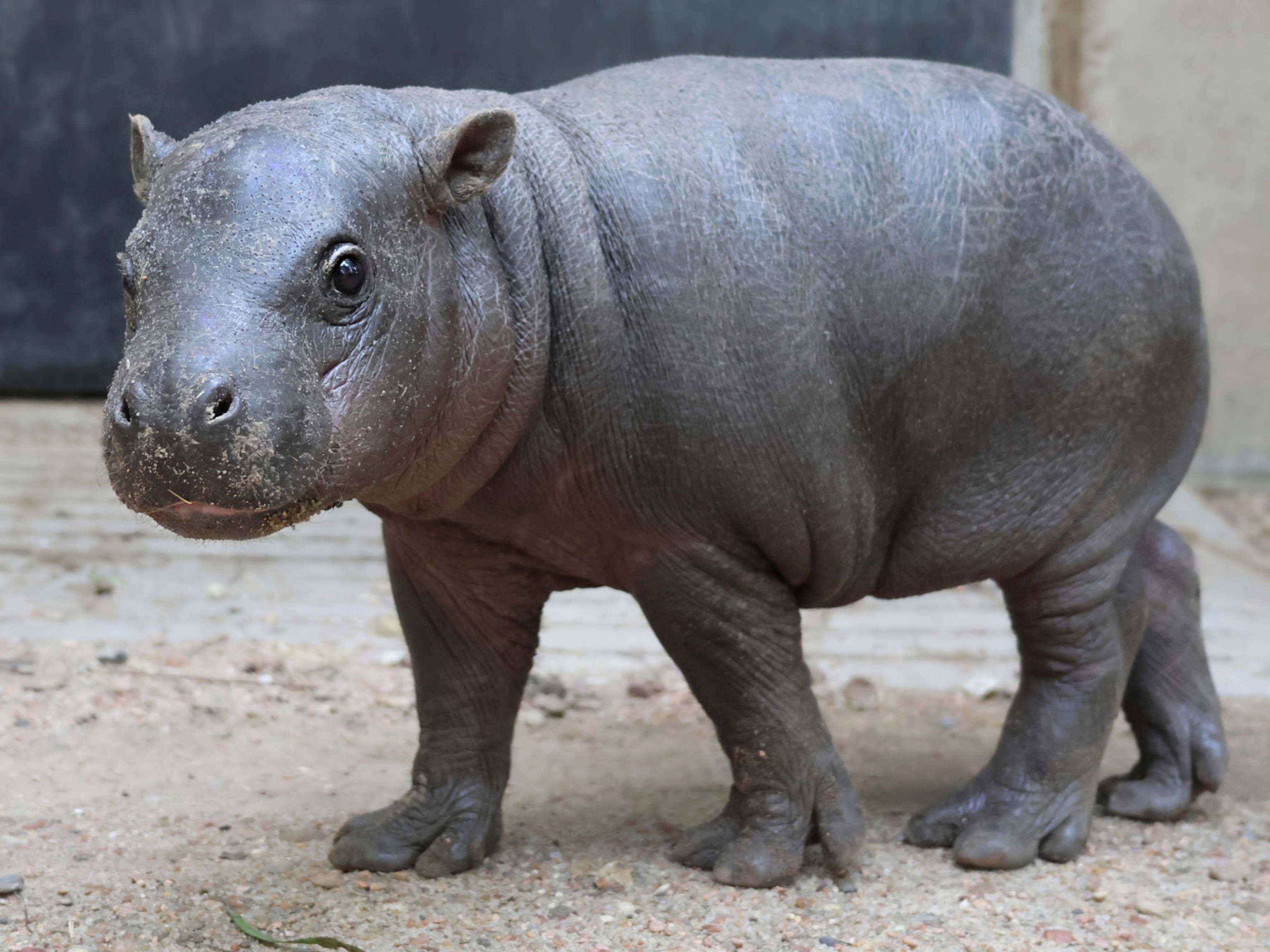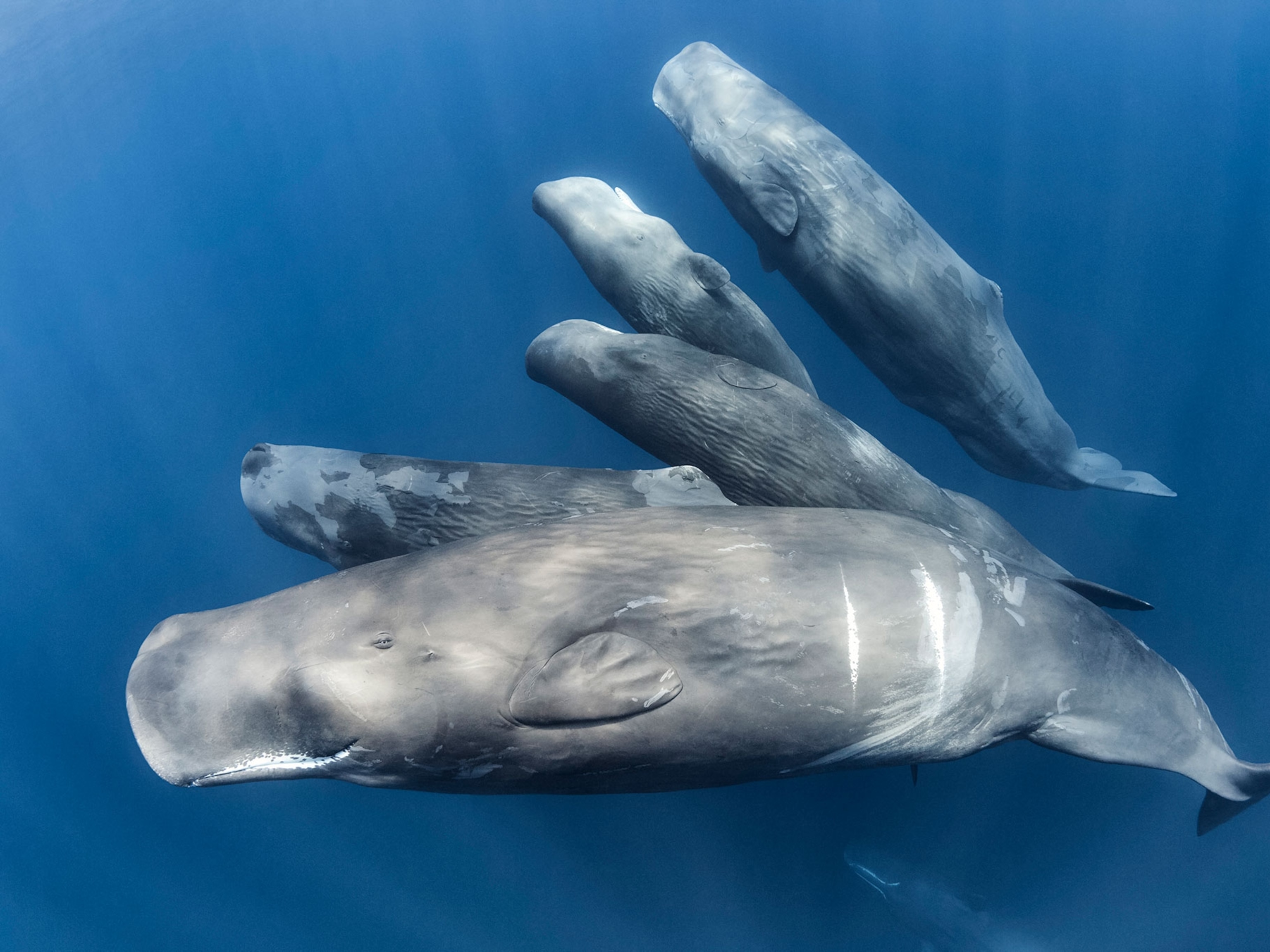An Artist’s Twist on Taxidermy Blurs the Boundaries of Humanity
In a bright, dusty loft next to the Brooklyn Navy Yard there is a studio that houses a menagerie of zebras, wolves, cougars, bears, greater kudu, gemsboks, baboons, and springbok. Except these animals are motionless and boast something never seen in nature: a human face.

The word “taxidermy” originates from the Greek words taxi and derma and translates to “the arrangement of skin.” A traditional taxidermist will tan the animal’s hide, removing the flesh and cartilage to preserve the skin and fur, before draping it around a foam body made to look like the animal in real life. But artist Kate Clark does things differently.
Instead of fresh hides, she recycles old ones that are considered imperfect for the typical purposes of trophy mounts. Whether they were left too long in the freezer or bugs ate holes in the skin, she will stitch them together with care, before lopping off the foam animal head and replacing it with one made of clay, sculpted to have human features and then covered in the animal’s own facial skin.

This is not in an effort to create a creature from fantasy or nightmares, but rather to confront the viewer with mankind’s innate connection with the animal kingdom by evoking empathy, curiosity, and, sometimes, discomfort.

When I walked into her studio for the first time, I stared into each one of those animal’s humanlike eyes, fringed with the animal’s real eyelashes. I felt chills up my spine, but not from horror or disgust. These were hauntingly beautiful sculptures that combined two separate worlds: one from the plains of the savanna and the other from the clustered, dirty streets of New York City.
“In the Western World, humans are so separated that we have no reason to connect with [wild] animals anymore,” Kate says. “We have become so other.” In fact, she says that most people don’t even realize that she often changes the sex of the animals. Going through her sculptures you will see female faces with antlers attached—an appendage usually sported only by male animals. “Something as straightforward as that doesn’t even register, because our understanding of the natural world isn’t very good anymore,” she says.

Though Kate did not have a background in taxidermy before she started this art, she has spent a lot of time getting intimately acquainted with the hides. From spending three days removing thousands of dead ticks from the mane and genitals of gemsboks to learning which hides can tear like wet paper towel, she gets to know the life stories of the animals she works with.
“This greater kudu has a really beautiful claw mark on the side,” she said, referring to the photo below, “so an animal attacked him at some point and he survived. This one has what some might consider an imperfection, but to me makes it all the more interesting.”

Using cotton thread and dressmaker pins, Kate will stretch, stitch, and secure the animal hides in place on the foam form. But the faces also have rows and rows of pins tracing patterns around the human face.
“Some think it’s tribal, some think it’s just decorative,” she explained. “But I want that construction to be really visible. [Since] the stitching disappears, the pins reemphasize that this face is constructed. Even though you recognize it and believe it, I want the viewer to see clearly that it’s transformed from the animal into the human.”

That transformation from animal to human is what has her work being viewed all over the world. Those intense eyes, the serene facial expression, and the proud animal’s body consistently draw in people from all different races, religions, and languages. Some are aghast at her audacity to combine human and animal, but most are entranced and appreciative of the message she hopes to get across.
“It speaks to people,” Kate says. “Even if they don’t know what’s happening in the contemporary art world, they recognize themselves in the work. And that means a lot to me.”
See more of Kate Clark’s work on her website.





